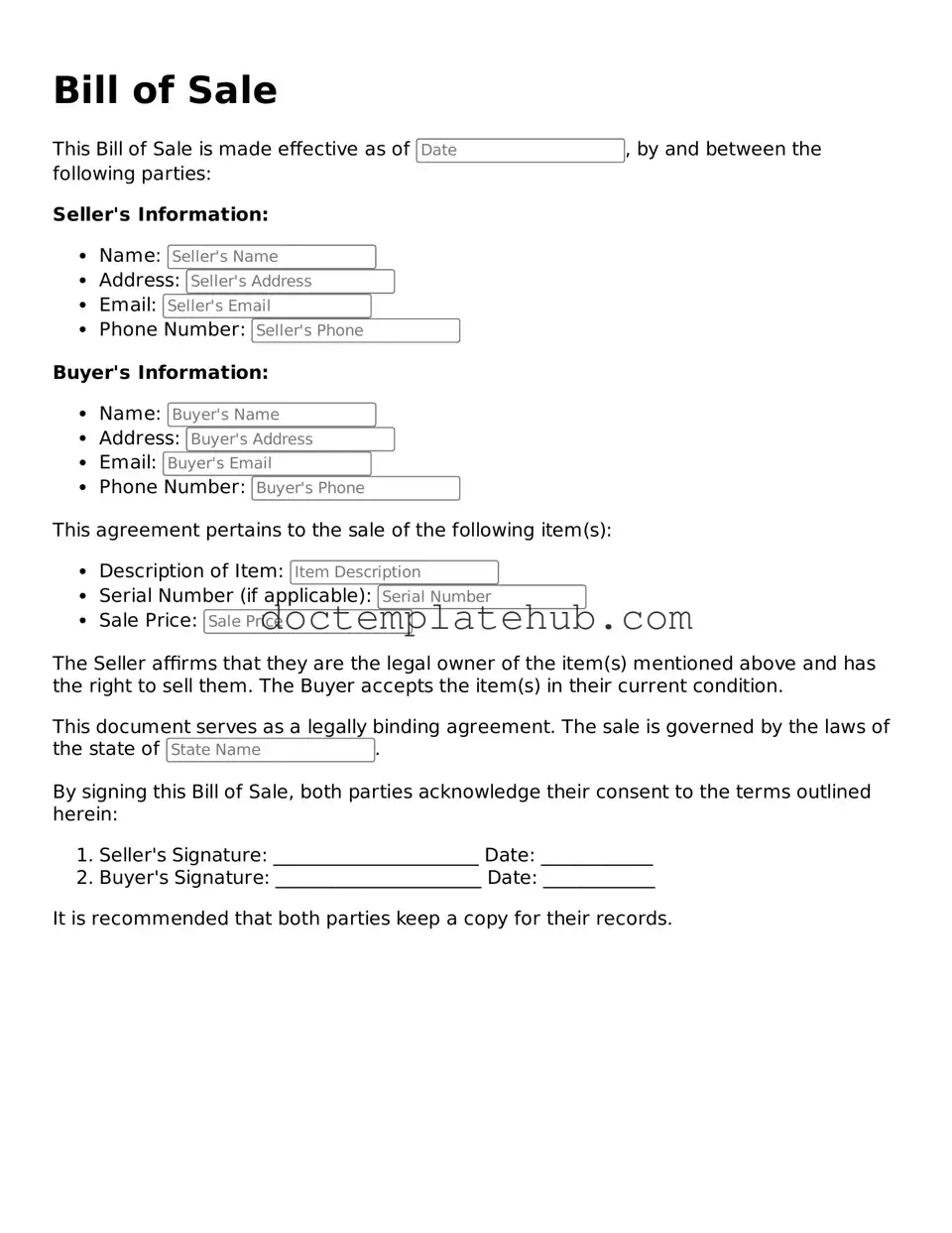What is a Bill of Sale?
A Bill of Sale is a legal document that serves as proof of the transfer of ownership of personal property from one party to another. It outlines the details of the transaction, including the names of the buyer and seller, a description of the item being sold, the sale price, and the date of the transaction. This document is essential for both parties, as it provides evidence of the sale and can protect against future disputes.
When do I need a Bill of Sale?
A Bill of Sale is typically required when selling or purchasing significant personal property, such as vehicles, boats, or equipment. While not always legally mandated, having a Bill of Sale is advisable to ensure that both parties have a clear record of the transaction. Additionally, some states require a Bill of Sale for vehicle registration or title transfer, making it crucial for compliance with local laws.
What information should be included in a Bill of Sale?
Essential information in a Bill of Sale includes the full names and addresses of both the buyer and seller, a detailed description of the item being sold (including make, model, year, and VIN for vehicles), the sale price, and the date of the transaction. It may also include any warranties or guarantees provided by the seller, as well as the method of payment. Ensuring that all relevant details are included can prevent misunderstandings later on.
Is a Bill of Sale legally binding?
Yes, a Bill of Sale is legally binding as long as it is properly executed. Both parties must sign the document, indicating their agreement to the terms outlined within it. While a Bill of Sale does not require notarization in most cases, having it notarized can provide an additional layer of protection and authenticity. This can be particularly important in disputes, as it serves as a formal record of the transaction.
Can I create my own Bill of Sale?
Absolutely, you can create your own Bill of Sale. Many templates are available online, which can guide you in drafting a comprehensive document. However, it is crucial to ensure that your Bill of Sale meets your state’s legal requirements. Customizing the template to reflect the specifics of your transaction will help in creating a more effective and relevant document. If in doubt, consulting with a legal professional can provide additional assurance.
